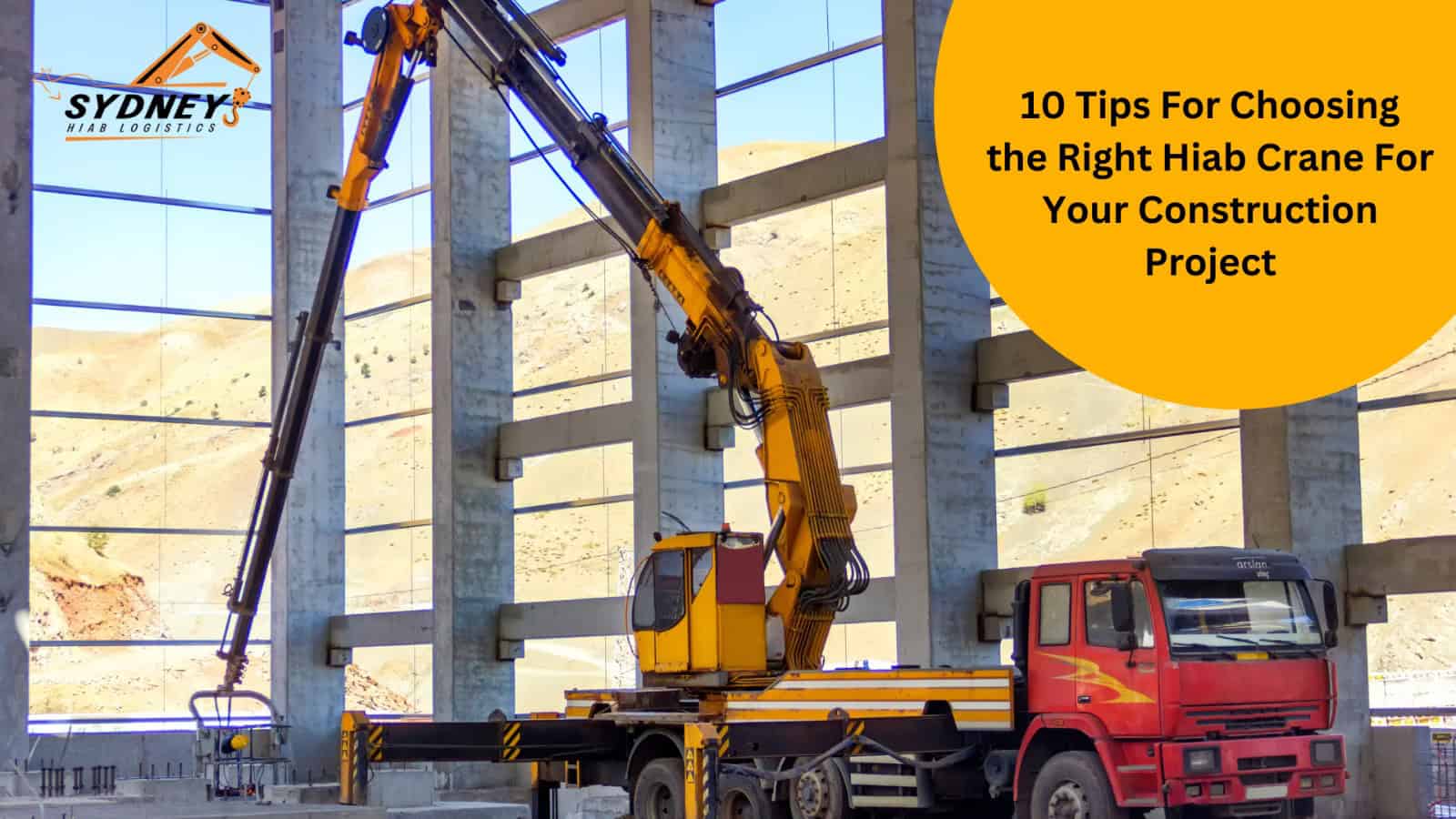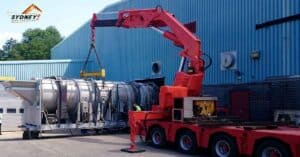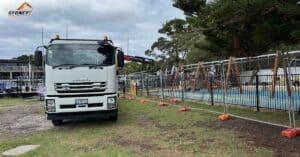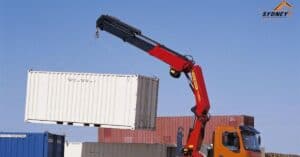Are you about to start on a construction project and feeling overwhelmed by the multitude of crane options out there? Don’t worry, you’re not alone! Choosing the right Hiab crane can be a challenging task, but fear not, because we’re here to simplify it for you. In this guide, we’ll walk you through 10 Tips for Choosing the Right Hiab Crane for Your Construction Project. From assessing project requirements to considering budget constraints, we will let you know how to handle everything in an organized manner. Get ready to make your crane selection process a breeze with these amazing tips!
Importance Of Selecting The Right Hiab Crane For Construction Projects
Selecting the right Hiab crane for your construction project is crucial for getting the job done safely and efficiently. Imagine trying to build a tall structure without the crane being able to reach high enough – it would be like trying to paint the ceiling without a ladder! If the crane can’t lift the weight you need it to, your project could be delayed or even put at risk. Different cranes are suited to different tasks, so picking the wrong one could mean wasted time and money. Plus, the terrain and environment of your construction site play a big role too. A crane that’s great for smooth, flat ground might struggle on rough or uneven surfaces. By choosing the right crane, you can ensure that your project runs smoothly, safely, and stays on schedule.
10 Tips for Choosing the Right Hiab Crane for Your Construction Project
Choosing the right Hiab crane for your construction project is like picking the perfect tool for a job – it needs to be just right. With so many options out there, it can be confusing to know where to start. But fear not, because we’re here to help you navigate through the process with these 10 simple tips:
Assessing Project Requirements
Before diving into the sea of crane options, it’s essential to define exactly what your construction project needs. Think about how much weight you’ll be lifting, how far you’ll need to reach, and the type of terrain you’ll be working on. Understanding these requirements will help narrow down your crane options and ensure you get the right one for the job. For example, if you’re working on a project with heavy materials like steel beams, you’ll need a crane with a higher load capacity. On the other hand, if you’re working in a confined space with limited access, a compact crane with excellent maneuverability might be more suitable.
Understanding Crane Types
Hiab cranes come in different shapes and sizes, each designed for specific tasks. From truck-mounted cranes to knuckle boom cranes, it’s essential to understand the different types available and their suitability for your project needs. For example, if you need precise maneuverability in tight spaces, a knuckle boom crane might be the best choice. Conversely, if you require a crane with greater stability and reach for lifting heavy loads at height, a truck-mounted crane might be more suitable. Understanding the strengths and limitations of each crane type will help you make an informed decision.
Evaluating Load Capacity
Accurately determining the weight of the loads you’ll be lifting is crucial for safety and efficiency. Take the time to calculate your load capacity requirements based on the heaviest items you’ll be moving. Remember to factor in any additional equipment or materials that may be added during the project. For example, if you’re lifting prefabricated concrete panels, you’ll need to account for their weight along with any attachments or rigging equipment. It’s better to overestimate your load capacity requirements to ensure the crane can handle any unexpected situations safely.
Considering Reach and Height
In construction, it’s not just about how much weight a crane can lift but also how far and how high it can reach. Assess the horizontal and vertical reach requirements of your project to ensure the crane can access all areas safely and efficiently. For example, if you’re working on a multi-story building, you’ll need a crane with sufficient height to reach the upper floors. Similarly, if you’re lifting materials over obstacles like trees or power lines, you’ll need a crane with excellent horizontal reach to maneuver around them safely.
Assessing Terrain and Environment
The terrain and environmental conditions of your construction site can greatly impact crane performance. Consider factors such as rough terrain, tight spaces, or harsh weather conditions when choosing a Hiab crane. Opt for a crane that’s suitable for the specific challenges of your site to ensure smooth operations. For example, if you’re working on a site with uneven ground or soft soil, you’ll need a crane with off-road capabilities and stabilizers to maintain stability. Similarly, if you’re working in an area prone to high winds, you’ll need a crane with features like wind speed sensors and automatic wind compensation to ensure safe operation.
Examining Safety Features
Safety should always be a top priority when selecting a Hiab crane. Look for features such as overload protection systems, emergency stop buttons, and anti-collision devices to minimize the risk of accidents on the job site. Don’t compromise on safety features – it’s better to invest in a crane that prioritizes safety than to cut corners and put lives at risk. For example, if you’re working in a busy construction site with multiple cranes and workers, you’ll need a crane with advanced safety features like real-time monitoring and warning systems to prevent collisions and accidents. Always prioritize safety above all else to ensure a successful and incident-free project.
Reviewing Mobility and Maneuverability
Mobility and maneuverability are essential for navigating around a busy construction site. Choose a crane that can easily move and position itself to access different areas without causing disruptions or delays. Consider factors such as crane size, turning radius, and steering capabilities when assessing mobility. For example, if you’re working in a crowded urban area with limited space, you’ll need a compact crane with excellent maneuverability to navigate through tight streets and alleys. Similarly, if you’re working on a large-scale project with expansive work areas, you’ll need a crane with fast travel speeds and long-range capabilities to cover more ground efficiently.
Considering Budget and Cost Factors
While it’s tempting to opt for the fanciest crane with all the bells and whistles, it’s important to balance your project requirements with budget constraints. Look for ways to maximize value without compromising on quality or safety. Consider factors such as upfront costs, maintenance expenses, and potential long-term savings when making your decision. For example, if you’re working on a short-term project with a limited budget, you may opt for a rental crane instead of purchasing one outright. Alternatively, if you’re working on a long-term project with predictable workload, investing in a high-quality crane with low maintenance costs may be more cost-effective in the long run. Always consider the total cost of ownership and weigh it against the benefits and features of the crane to make an informed decision.
Seeking Expert Advice
When in doubt, don’t hesitate to seek advice from Hiab crane experts. Consulting with professionals who have experience in crane selection and operation can provide valuable insights and guidance. Reach out to reputable suppliers or contractors who can offer personalized recommendations based on your project requirements. For example, if you’re unsure about which crane type or model is best suited for your project, a qualified crane engineer or technician can assess your needs and recommend the most suitable option. Similarly, if you’re facing challenges or issues during crane operation, experienced technicians can provide troubleshooting assistance and practical solutions to ensure smooth and efficient project execution.
Case Studies: Real-Life Examples
Sometimes, the best way to understand the importance of choosing the right Hiab crane is by looking at real-life examples. Explore case studies of past construction projects where the selection of the appropriate crane made a significant difference in project efficiency, safety, and overall success. Learn from these experiences to make informed decisions for your own construction projects. For example, you may find case studies where the use of specialized cranes or innovative lifting techniques helped overcome unique challenges and achieve project goals. By studying these real-life examples, you can gain valuable insights and inspiration for optimizing crane selection and operation in your own projects.
In conclusion, choosing the right Hiab crane is crucial for a successful construction project. By following the 10 tips provided, you can ensure safety, efficiency, and cost-effectiveness. Prioritize understanding project requirements, considering budget constraints, and seeking expert advice. Remember, safety should always come first, and investing in quality equipment pays off in the long run. Real-life case studies offer valuable insights for optimizing crane selection and operation. With careful consideration and informed decisions, you can select the perfect Hiab crane to meet your project needs and achieve success.
If you’re searching for the perfect Hiab crane for your construction project, then you can contact Sydney Hiab today for all your lifting and transportation needs. Whether it’s heavy lifting, tight spaces, or unique challenges, our experienced team is here to help. Get in touch now to discuss your project requirements and receive expert advice and assistance. Let Sydney Hiab be your trusted partner in crane solutions.
What types of projects can benefit from using a Hiab crane?
Hiab cranes are versatile and can be used for various projects, including construction, logistics, and infrastructure development. They are particularly useful for lifting heavy materials, transporting goods, and maneuvering in tight spaces.
How do I determine the right Hiab crane for my project?
Assess your project requirements, including load capacity, reach, terrain, and environmental conditions. Consult with Hiab crane experts to get personalized recommendations based on your specific needs and constraints.
Are Hiab cranes safe to use?
Yes, Hiab cranes are designed with safety features such as overload protection systems, emergency stop buttons, and anti-collision devices to ensure safe operation. Regular maintenance and proper training for operators further enhance safety.
Can I rent a Hiab crane for my short-term project?
Yes, many crane rental companies offer Hiab cranes for short-term projects. Renting can be a cost-effective solution, especially for projects with fluctuating workload or budget constraints.
What if I encounter challenges during crane operation?
If you encounter challenges or issues during crane operation, seek assistance from experienced technicians or engineers. They can provide troubleshooting support and practical solutions to address any concerns.
How do I ensure compliance with regulations when using a Hiab crane?
Ensure that your crane operation complies with local regulations and safety standards. Stay informed about any permits or certifications required for crane operation in your area and follow recommended guidelines for safe lifting practices.
What maintenance is required for Hiab cranes?
Regular maintenance is essential to ensure optimal performance and safety of Hiab cranes. This includes inspections, lubrication, and servicing of mechanical and electrical components as per manufacturer recommendations.
Can Hiab cranes be used in different weather conditions?
Yes, Hiab cranes are designed to operate in various weather conditions, including rain, wind, and snow. However, it’s essential to take precautions and follow safety protocols to mitigate risks associated with adverse weather.




